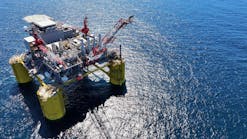DOE wants to mobilize subsurface engineering R&D efforts
The US Department of Energy wants to mobilize federal government, oil and gas industry, university, and other research to address subsurface engineering challenges, particularly controlling fracture propagation and fluid flow, officials said at the first of several projected discussions.
The industry learned from experience after it starting producing oil and gas from tight shale formations in 1995-96, observed Doug Hollett, director of DOE's Geothermal Technologies Office and a member of the department's Subsurface Technology and Engineering Crosscut Technical Team.
"There was this wonderful stumbling across information as producers drilled lots of wells and learned from their mistakes," he said July 22 at the US Energy Association's headquarters. "I wonder if there isn't a better way."
Susan Hubbard, a senior scientist and director of the Lawrence Berkeley National Laboratory's Earth Sciences Division, said, "Improved subsurface utilization really is a key to our national energy security. There's been a very nice dialogue across all the national laboratories about adaptive control of the subsurface."
Hollett noted that nine core areas, including wellbore integrity and new subsurface signals, were identified during a Mar. 14 national labs summit. Common interests, goals, and concerns already have emerged as diverse groups conducted research, he said. At least three more of these discussions where critical questions can be asked will be held, including possibly one during the American Geophysical Union's fall meeting Dec. 15-19 in San Francisco, he said.
Storage management
Subsurface storage is as important as resource production, Hubbard said. "We want to be able to avoid making fractures and heal some we create," she stated.
Long-term production sustainability also is a challenge since 30-50% of unconventional wells drilled each year have to be replaced, resulting in higher costs and environmental impacts, she said. "We could do a lot better if we could master this subsurface environment," Hubbard said.
"There are buckets of research needs," she said. "It's a continuum that ultimately includes industry, universities, and other stakeholders. We're looking for advanced partnerships to advance technology in this very important subsurface space."
Producers would like to find alternatives to the 2-4 million gal of water required for the average frac job, noted another speaker, Srikanta Mishara, a senior research leader specializing in energy and the environment at Battelle Memorial Institute. The slickwater alternative (a combination of nitrogen or carbon dioxide and foam), which is more frequently used in Canada than in the US, reduces water and proppent requirements, produces more uniformly distributed fractures, and alleviates water scarcity concerns, he said.
Many promising technologies look great in the lab but have not been field-tested because it can be expensive, Mishara said. Challenges include cheaper sourcing with good performance, better understanding of nanoparticle transport in a variety of rock types, and fractured media and mechanical models of sweep improved from nanoparticle introduction, he said.
Understand fracing dynamics
Producers agree that fracing technology needs to be improved, according to a fourth speaker, Iraj Salehi, a fellow at the Gas Technology Institute. "Current practices are inefficient in many cases because most production in a horizontal well comes from a few fracture stages," he said. "We need to understand hydraulic fracturing's dynamics to use less water to produce more oil and gas."
Needs include accurate geologic characterization, reliable and affordable measurement tools, better understanding of cause and effect relations between fracing parameters and created fractures, and a dynamic fracture model, Salehi said. "This group feels as if it's on the right track," he added. "It's looking at the right things."
Hollett said, "A fundamental question involves what's going on in the surrounding subsurface when proppants are injected to stimulate production. There's suddenly a different chemical composition nearby deposits. What are its effects? Also, are there ways to make these fractures branch and produce more oil? What are the impacts if we did?"
DOE's initiative is a potentially exciting development, an American Petroleum Institute official told OGJ following the discussion. "It's important to get smart facts," said Richard Ranger, a senior policy advisor in API's upstream department.
"The federal government did support a lot of the basic research," Ranger said. "But it was when George P. Mitchell used horizontal drilling with hydraulic fracturing that it began to work. This does not minimize the importance of understanding subsurface formations. But to use an old oil industry saying, there's a time to get the scientists out of the room and start drilling. There's a lot of value in seat-of-the-pants experience."

Nick Snow
NICK SNOW covered oil and gas in Washington for more than 30 years. He worked in several capacities for The Oil Daily and was founding editor of Petroleum Finance Week before joining OGJ as its Washington correspondent in September 2005 and becoming its full-time Washington editor in October 2007. He retired from OGJ in January 2020.
